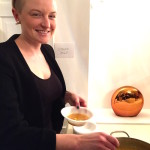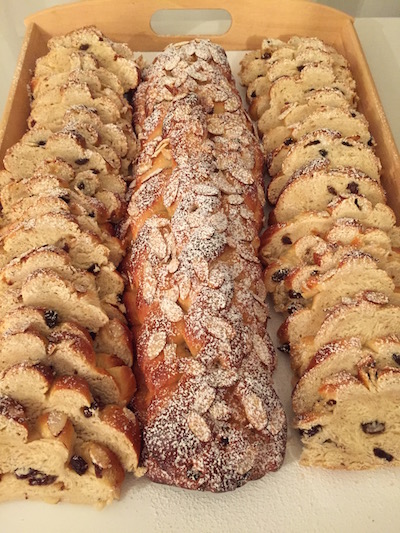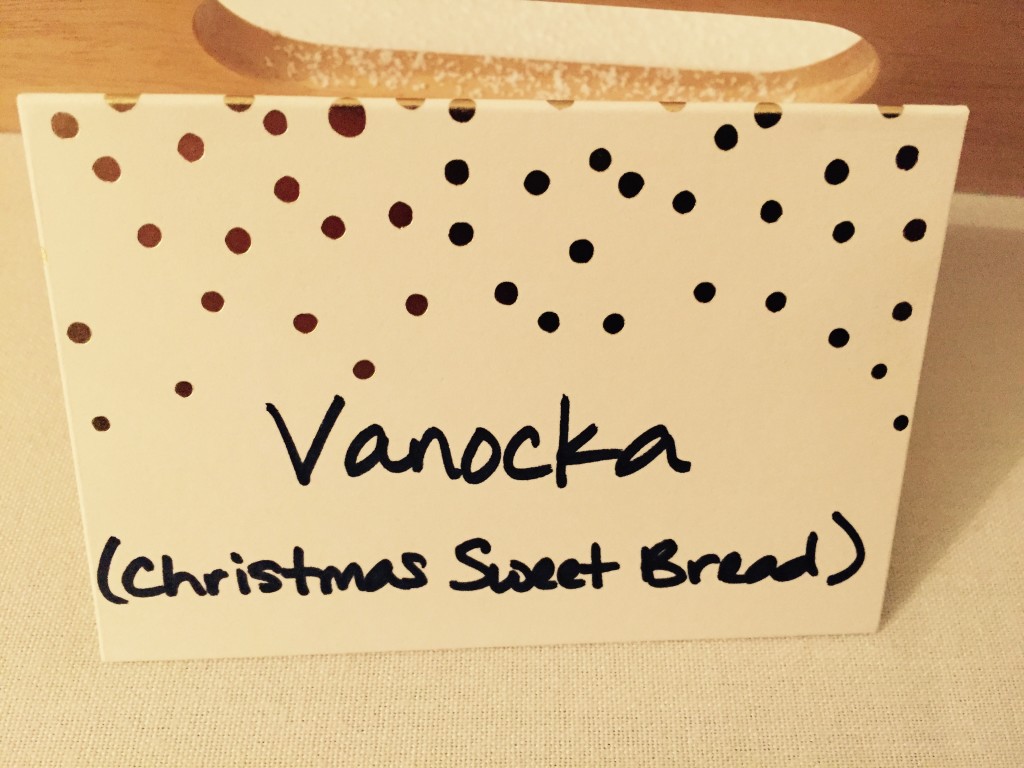My Czech-ered Past Catches up with Me This Xmas
(Gerry Furth-Sides) A traditional Czech feast, both luxe and straightforward at the same time, welcomed in both the holiday season and the new Consul of Czech Republic. A light drizzle added to the wintery feeling and made his beautiful home feel all the more festive and cozy.

Fish Soup in a Light Broth

Fried fish, traditionally Carp (Tilapia here), Potato Salad

 The recipe for potato salad differs slightly among every Czech family. The main ingredients potato cooked with jacket, canned peas, onions, cooked carrots, parsley and celery, pickled gherkins, cooked eggs and mayonnaise. Some families may add grated apples or salami. The best potato salad is prepared a day before Christmas Eve so that all the ingredients can “mellow” for a day. Legend has it that “the Christmas dinner should be the first food consumed that day. Those who do not break the Christmas shrove are believed to be able to see a golden pig on a wall.”
The recipe for potato salad differs slightly among every Czech family. The main ingredients potato cooked with jacket, canned peas, onions, cooked carrots, parsley and celery, pickled gherkins, cooked eggs and mayonnaise. Some families may add grated apples or salami. The best potato salad is prepared a day before Christmas Eve so that all the ingredients can “mellow” for a day. Legend has it that “the Christmas dinner should be the first food consumed that day. Those who do not break the Christmas shrove are believed to be able to see a golden pig on a wall.”
Chef David Pavlik explained to us that Carp is wonderful in Czechoslovakia and in Israel, but the quality is inferior is most other place. I remember when my fantastic cook, Aunt Alice, came from Czechoslovakia to the U.S. by way of Canada, there was a live carp swimming in a pail in her pantry. I remember having no reaction since our extended family was still in the meat broking business at the time (and in Czechoslovakia where the army was a main client).
A little research shows a strong connection between Christmas and carp Fishing. Traditionally the Czech Republic and Slovakia, as well as in Germany and Slovakia, the man of the house would go and fish for the carp or buy it at the fish market. Fish would be usually brought home alive and kept overnight in the bath. On the Christmas night the Carp would be killed and freshly served fried or steamed. Leftovers of the fish would be used to cook a traditional fish soup.
These days, Chef David uses talapia instead. Passionate about food, David told us that he catered and did parties outside of his nine to five job because he loved cooking so much. I did remember reading this fact about carp (and that when my aunt came from Czechoslovakia to the United States by way of Canada, she bought live carp and had them swimming in a bucket in the back pantry! When I cooked on TV more recently, we used Simplot (who does the McDonald’s potatoes) farm-raised Talapia since this fish is considered a bottom feeder.

The most delicious, moist and dense Vanocka or Christmas Sweet Bread was dessert. All three rows of this were gone in no time!


Before the Christmas holidays, many kinds of sweet biscuits are prepared. The Christmas cookies are then served during the whole Christmas period and exchanged among friends and neighbors.
St. Nicholas Day, Dec. 6, signals the beginning of Christmas baking for many Czechs. Out come all the time-honored recipes for labor-intensive and easy no-bake cookies and sweets known as vánoční cukrovi (vah-NAWTCH-nee tsoo-KRAW-vee). Many of them were in our gift bags as we departed for the evening. Butter cookies (made into a sandwich with a thimble hole in one of two cookies and jam in between the layers, dainty tarts, almond slab-studded icebox cookies and crescents were the ones I remember from home.
The basic butter cookie turns into many versions in the Czech kitchen. This one basic recipe can be transformed into different cookies by varying the shape, and sandwiching together with jam or cookie filling, decorating with different-colored icings, dusting with confectioners’ sugar or leaving plain.
Susenky (soo-SHEN-kee) are popular cookies served for special occasions and at Christmas they become vanocni cukrovi (vah-NAWTCH-nee koo-KRAW-vee). This easy recipe for Czech black-and-white cookies or linecke testo dvoubarevne (lih-NETS-keh TAYS-toh dvaw-oo-bah-RREV-nay) can be made into zavitky (pinwheel), sachovnice (checkerboard), kolecka s obrouckou (wheel), rezy ze cytr pruhu (square), and salam (salami) shapes.
The next day we served them on a family cafe set that made them taste better, if possible.
If anything, the pastries I remember from home were richer and filled much more butter? Why? Because my parents were of the Austro-Hungarian Empire – which had such strong influences from the French and Italian, “the best,” as they always boasted. It is also why, as my chef friend, Roberta Deen, pointed out, the fact that you loved our Mexican Polvorones (known as Russian teacakes), was that it was probably brought by the French when they conquered Mexican. At the same time, you only find this to be true with truly regional cooking, when you step outside the food of the poor.


 Gerry Furth-Sides
Gerry Furth-Sides  Barbara Hansen
Barbara Hansen  Chef-owner Alain Cohen
Chef-owner Alain Cohen  Roberta Deen
Roberta Deen  Jose Martinez
Jose Martinez  Nivedita Basu
Nivedita Basu